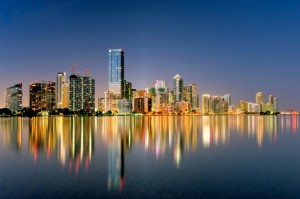One of the reasons that many people come to Panama is because, besides being a wonderful place to live, the cost of living is around 50% of what it is back in the US and Europe. However, many people are shocked to see that our real estate market is not 50% off like most areas that were hit with the housing downturn. Our market continues to appreciate albeit at a more modest growth rate. What was surprising to learn on reading this article, was the fact that certain markets have changed like Miami where the Brazilians are driving the market along with host of other countries who find Miami cheap compared to theirs. This in from Forbes
The Lone Star state has gotten a lot of good press lately for coming through the economic downturn relatively unscathed. Since 2008, nearly 40% of all of the nation’s new jobs since have been created there. Thanks to that strong economy, housing in Texas’ biggest cities, including Houston, San Antonio and Austin, never suffered from the plunge in property values that struck the rest of the United States in the last few years.
So it wouldn’t surprise you to see them top a list of the nation’s most overpriced cities, places where the cost of living–especially housing prices–are the highest compared to median income.
Yet none of them make our list. They didn’t even come close. But we were surprised when we ran the numbers and found another Texas town within the top five: McAllen. Known for its hardscrabble economy and high unemployment, the City of Palms suffers from a 11.7% jobless rate–and the lucky folks who do find work don’t tend get a fat paycheck. National Association of Home Builders estimates the median salary for all McAllen-area residents is $33,700 versus $64,200 nationwide. College grads lucky enough to have work make an average of $44,900 per year in an area dominated by lower-paying industries like healthcare, retail, hotels and food services, says Katie Bardaro, a lead economist at PayScale. The U.S. Census Bureau crowned the City of Palms America’s urban poverty capital for 2010 with a 33.4% rate.
So while the cost of groceries, clothing and gas—and even housing, with a median price of 107,000–are low compared to a lot of other cities in America, this border city of 741,000 is still comparatively one of the toughest places to make ends meet anywhere. “It’s still hard to buy a house even if it’s cheap because there are low incomes,” says David Crowe, chief economist of economics and housing policy for the National Association of Home Builders (NAHB).
Gallery: America’s Most Overpriced Cities
Behind the Numbers
To find the Most Overpriced cities, we started with America’s 100 largest Metropolitan Statistical Areas (MSAs) and Metropolitan Divisions (MSADs), all with populations of more than 600,000 residents or more. MSAs and MSADs are cities and their surrounding suburbs as defined by the Office of Management and Budget. We then ranked these places based on four metrics, placing an equal weight on each metric.
First we looked at housing affordability, using the Housing Opportunity Index (HOI) compiled by the National Association of Home Builders and Wells Fargo. The quarterly index weighs median prices for homes sold against median income levels to determine the percentage of local residents who could afford to buy a home. A lack of sufficient data for New Orleans and Baton Rouge, La., as well as Omaha, Neb., Kansas City, Mo., Nashville, Tenn., Birmingham, Ala., and Little Rock, Ark. means we had to exclude those metro areas from our calculations.
Next we assessed the cost-of-living index created by Sperling’s Best Places, to gauge the cost of food, utilities, gas and a variety of other everyday expenses in each area. Cities that clock a cost-of-living rank above 100 represent places where these goods cost more than the national average. Since some expensive cities are balanced out with high incomes, we factored in the median salaries for residents with a BA degree or higher to see just how far a paycheck actually stretches in each of these cities, using data from Payscale.com. Last, we included local unemployment rates collected from Moody’s Economy.com and the Bureau of Labor Statistics.
Who’s Number One? Los Angeles.
